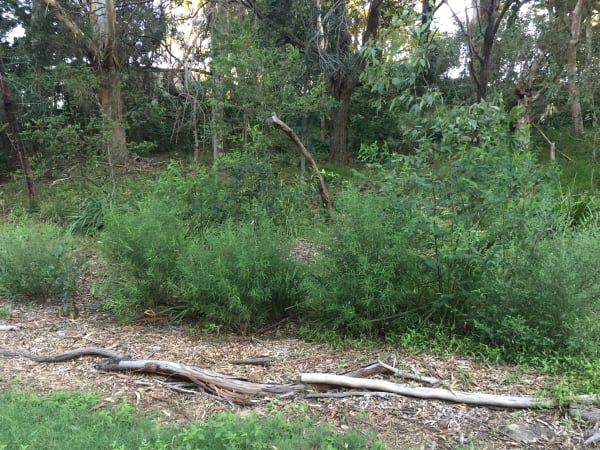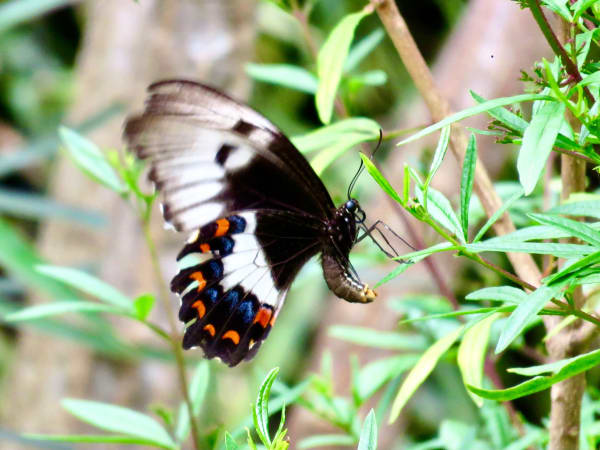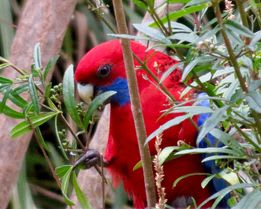The Sandfly Zieria (Zieria smithii) is a low shrub that grows across the Illawarra region, generally in woodlands and wet sclerophyll forests. Its natural range is the coast and ranges, up into Queensland and down into Victoria. You'll see it at places like Wiseman Park in Gwynneville, Richardson Park in Keiraville and at Blackbutt Reserve in Shellharbour.
It has pretty but very small white flowers and distinctive leaves with three separate leaflets (this is known as having trifoliate leaves). It gets its common name from the idea that the crushed leaves, which are strongly aromatic, can be rubbed on the skin to repel flies and mosquitoes. I have never tried this and don't know if it works, but I'm sceptical!

Where the scented leaves of Sandfly Zieria come into their own is in attracting butterflies, and particularly the large and stunning Orchard Swallowtail butterflies (Papilio aegeus), with their varied reds, whites, blacks and blues.
These butterflies favour plants in the family Rutaceae, which includes citrus plants to lay their eggs, and the brown and white larvae can be seen browsing the leaves as they grow. There are many native genera in the Rutaceae family, not just Zieria, but also Melicope, Sarcomelicope, and Geijera, not to mention the Boronias and Philothecas (Wax Flowers) that grow on nutrient-deficient sandstones in the Sydney Basin.

The fruit of Sandfly Zieria are also fauna-attracting, and are absolute catnip for Crimson Rosellas (Platycercus elegans), which come to gorge themselves in summer or autumn when the seeds are developing.
As Sandfly Zieria is a low shrub, feeding in them makes the Rosellas vulnerable to predators, particularly cats. This is yet another reason to keep cats indoors, to ensure your cat wears a cat bell while outside, or indeed not to have a cat at all.
Attracting birds to a garden that exposes them to predation is a constant challenge in urban areas, where foxes and domestic and feral cats roam. Having a relatively dense shrub layer can also help mitigate this risk.






